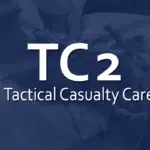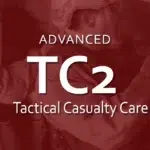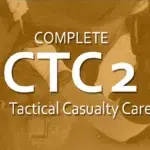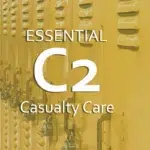Trying to select a course?
Course Overview By Skills
| SKILLS: | Tactical Casualty Care | Advanced TC2 | Complete TC2 |
|---|---|---|---|
| TC2 Train Now | ATC2 Train Now | CTC2 Train Now | |
| Tourniquet | X | X | X |
| Bandaging/Pressure Dressing | X | X | X |
| Recovery Position | X | X | X |
| Basic Airway Maneuvers | X | X | X |
| Moving Casualties | X | X | X |
| Wound Packing | X | X | X |
| Nasal Airways | X | X | |
| Decompression of Tension Pneumothorax | X | X | |
| Surgical Airways | X | ||
| IV / IO | X | ||
| Dedicated Litter Use | X | ||
| Hypothermia Prevention Kit | X | ||
| Cost - Online | $150 | $395 | $595 |
| Cost - In Person | $275 | $1,000 | $1,500 |
Tactical Casualty Care (TC2)
The Tactical Casualty Care course requires no medical background or training. This material is designed for everyday citizens, law enforcement, Fire, EMS, and military combatants. This is the minimum level of medical tactical training anyone who carries a firearm, professionally or personally, should take. The 8-hour online course focuses primarily on the Care Under Fire or Direct Threat phase of an event, where the responder and injured are still in an ongoing threat to life. Learn how to quickly evaluate the injured, focus on what’s most important, manage massive hemorrhage, and stop preventable death with minimal equipment.
Tactical Casualty Care is consistent with the TCCC All Combatants Guidelines. It covers nearly everything in the Combat Lifesaver Skill set except needle decompression of tension pneumothorax, splinting, and BVM use.* It also teaches everything in the TECC First Responders With a Duty to Act guideline.
Advanced Tactical Casualty Care
The advanced course covers everything in the TC2 and expands on it. This course is designed for everyday citizens, law enforcement, Fire, EMS, and military combatants and medics, who want more training in tactical casualty care. The course expands the information into both more detail, and the Tactical Field Care or Indirect Threat phase of the event. This course teaches some skills your state may characterize as paramedic level but does not require prior medical training. This course covers everything in the TCCC All Combatants guideline, the TECC First Responders with a Duty to Act, and specifically adds treatment of chest injuries, including decompression of tension pneumothorax.
Advanced Tactical Casualty Care exceeds the CLS skill set by covering finger thoracostomy. Because it doesn’t cover surgical airways or burn resuscitation, the Combat Medic Tier 3 provider would be better served by the Complete TC2, (although finger thoracostomy taught there would exceed their skill set.)*
Complete Casualty Care
The complete course covers all materials in the TCCC for medical personnel and TECC guidelines. As such, many of the skills are best suited for students who work in extreme environments or those with a paramedic or physician-level background. This course covers many paramedic-level skills. This stand-alone course covers everything in the prior two courses, including all possible field care treatments for preventable death and preparing the casualty for the evacuation phase.
Complete Tactical Casualty Care covers everything in the TCCC Guidelines for Medical Providers, is designed for the Combat Paramedic or equivalent, and is a Tier 4 course by skill set.* It also covers everything in the TECC guidelines for ALS Providers.
Essential Casualty Care (EC2)
The Essential Casualty Care is designed to teach the foundations of tactical casualty care for those with little or no prior experience, such as teachers, office workers, youth leaders, and faith communities. The 2.5-hour online course focuses primarily on how to use the items you would find in a public access hemorrhage control kit to save lives. Learn how to quickly evaluate the injured, focus on what’s most important, manage massive hemorrhage, and stop preventable death with minimal equipment. This course teaches everything in the TCCC All Service Members guideline, is a Tier 1 equivalent class, and the TECC Active Bystander guideline.
*Bag valve mask use isn’t covered in any of the TC2 series classes as it is very difficult to show casualties needing ventilation survive prehospital in high-risk environments. Proper BVM use is best taught through more traditional EMS classes.




